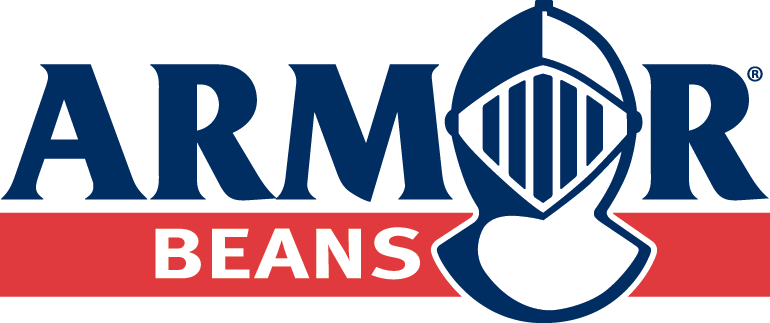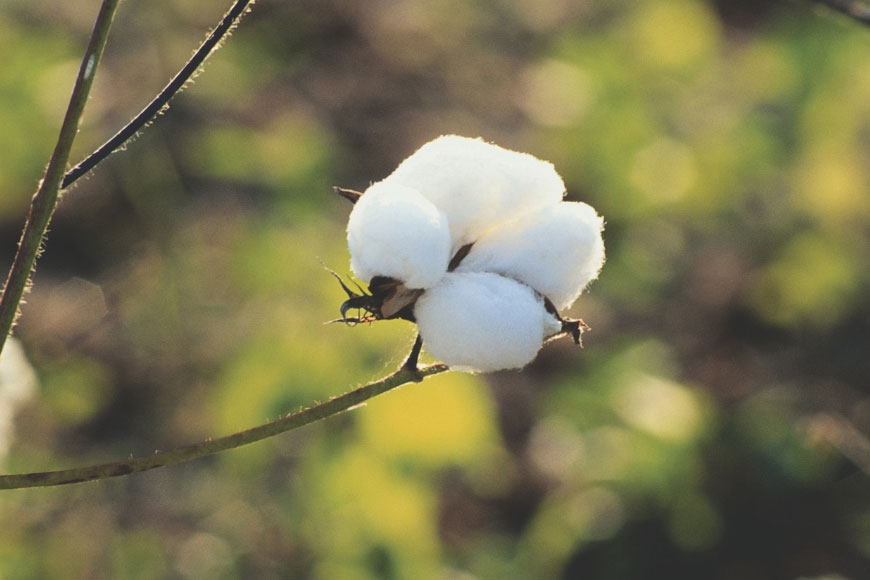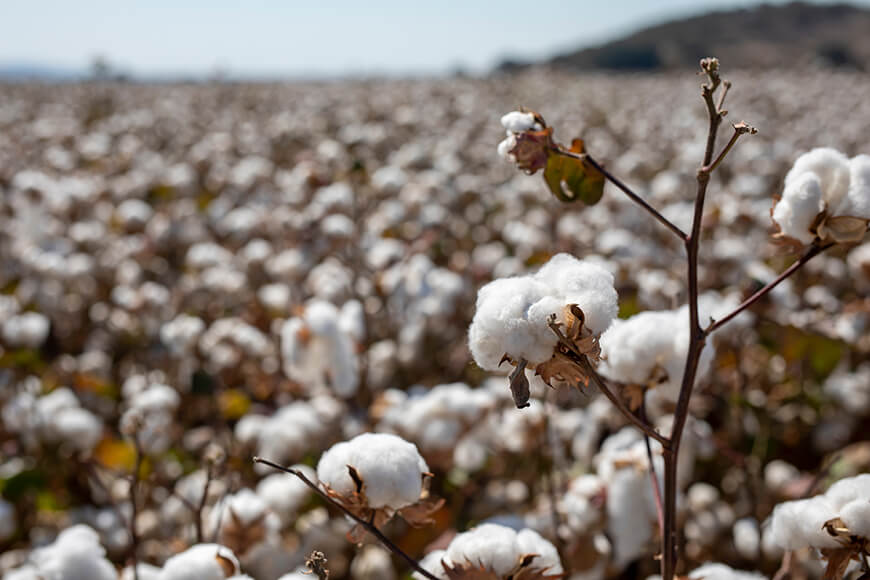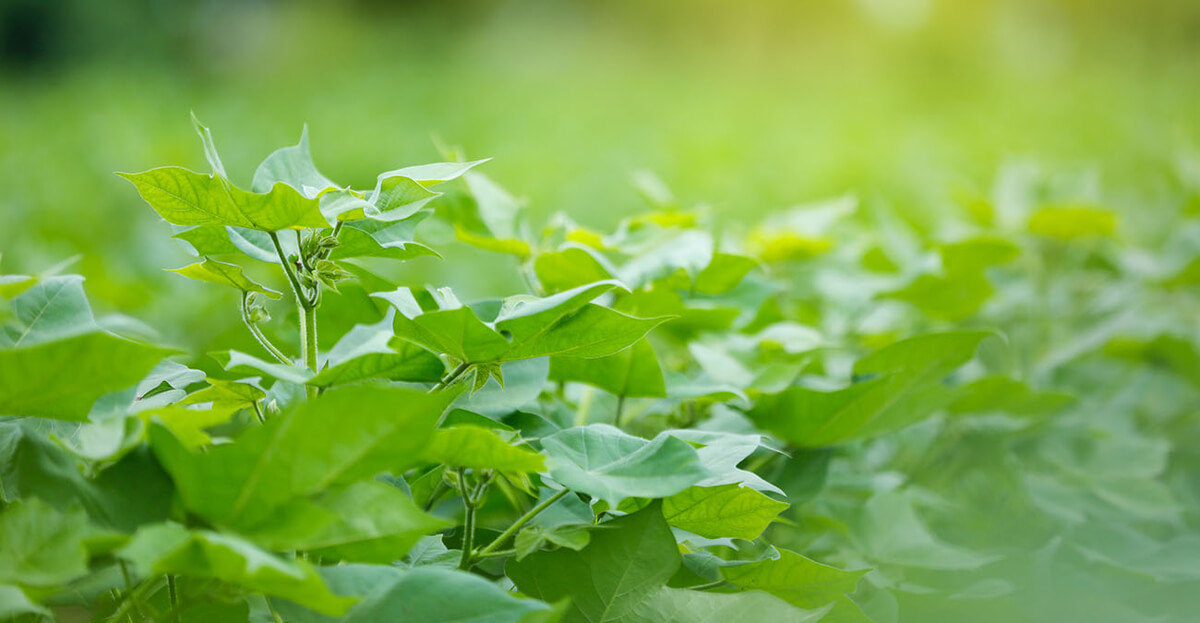- Written by Kyle Barker
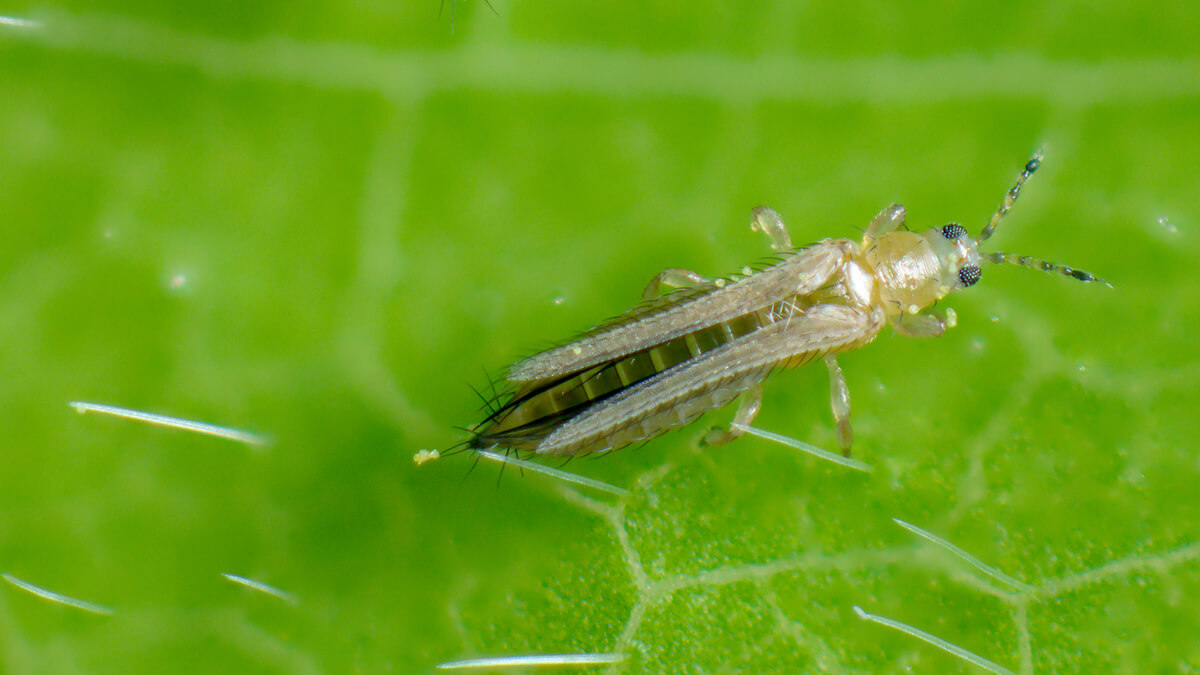
Thrips may be small, but their damage can be mighty. If they’re given a head start and attack emerging cotton plants, they can squash production potential before the crop has a fighting chance. That’s why it’s important to plan ahead, know your management options and act quickly.
What Are Thrips?
Thrips are small, slender insects that exhibit piercing-sucking behavior on plant tissue, punching holes in leaves and sucking out cellular proteins. They generally feed on young, emerging cotton plants, which weakens the crop and can result in reduced stands, stunting, and delayed maturity.
Plants are most vulnerable from expanded cotyledon through the first or second true leaf stage. Once they reach the five true leaf stage, thrips become less of a concern. Until then, it’s important to scout often and diligently.
Signs of Thrips Infestation
When scouting for thrips, carefully examine at least 25 plants per field weekly and look for:
- Puckered, bubbling or curling leaves.
- Rust-colored undersides of leaves.
- Silvery sheen or patches on the expanding leaf tissue.
- Live thrips on leaves. Some herbicides can create injury that mimics thrips injury.
The economic threshold for foliar applications in thrips is approximately 25% or more of the plants showing significant injury or an average of two or more immature thrips per plant at the cotyledon to first true leaf stage. Finding immature thrips indicates the population is still growing and damage could increase. There may be less urgency to pull the trigger on an insecticide application if you notice mostly adult thrips.
Conditions Conducive to Thrips
While thrips are a common cotton pest, certain situations are more conducive to infestations than others, such as:
- Late-Planted Cotton: Planting later can put plants at vulnerable young stages when thrips pressure is highest.
- Dry Planting Conditions: When there is less moisture in the soil, plants take up less at-plant insecticide, which is typically a key tool used to help young seedlings defend against the pest.
- Seedling Diseases: If plants are weakened by pathogens, it can slow their growth and make them an easier target for thrips.
Thrips pressure prediction tool by North Carolina State University can help monitor thrips risk in your area. The tool uses planting date, geographic location, and local weather conditions to estimate thrips dispersal timing, seedling susceptibility, and injury risk.
Thrips Control Strategies
Since thrips target seedlings, having a quality seed treatment is a must. Armor® cotton varieties are treated with either Acceleron® Standard or Acceleron® Elite seed treatments. Both include imidacloprid insecticide for thrips control. As the cotton seedling is germinating and emerging, the seed treatment is incorporated into the cotyledons and first true leaves, protecting the cotton plant for 14-20 days.
Many growers choose to add an in-furrow insecticide to their plan, which can add another valuable layer of protection.
Genetic innovations are also improving thrips management options. There is now Bt technology available through the ThryvOn® trait that provides thrips control. This technology is available in Armor variety 9383 B3TXF, a versatile product that can travel across broad acres in early-mid to mid-maturity areas and provides bacterial blight resistance. Armor seed is continuing to innovate in this space with additional products containing the ThryvOn trait on the horizon.
Even if preventive measures are taken, a foliar application may still be warranted. In fact, multiple applications can be necessary if pressure is severe.
For More Information
For more information on thrips management and cotton variety selection, contact your local Armor seed dealer.
All photos are either the property of WinField United or used with permission.
© 2024 WinField United. Important: Before use always read and follow label instructions. Crop performance is dependent on several factors many of which are beyond the control of WinField United, including without limitation, soil type, pest pressures, agronomic practices and weather conditions. Growers are encouraged to consider data from multiple locations, over multiple years and to be mindful of how such agronomic conditions could impact results.
Armor and WinField are trademarks of WinField United. All other trademarks are the property of their respective owners.

